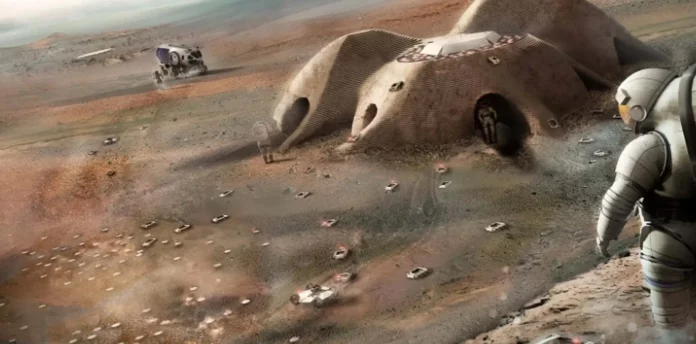
Exploring beyond Earth’s atmosphere fuels our quest to uncover our cosmic purpose and innovate solutions that reshape life on our planet. | Courtesy of BIG
As humanity reaches for the stars, space architecture emerges as a critical discipline bridging engineering, design, and science fiction to shape our extraterrestrial futures. Defined as the practice of designing and building environments for human activity in space, space architecture is no longer a dream relegated to science fiction. Instead, it has become an indispensable field in the 21st century, addressing the challenges of exploration, survival, and inspiration.
The concept of living and working in space has captivated humanity for decades. Early visions of space settlements were popularized by visionaries like Konstantin Tsiolkovsky and later depicted in movies and literature. These ideas laid the groundwork for practical advancements, with space architecture evolving from speculative designs into a field that supports our ventures beyond Earth. In today’s world, the relevance of space architecture lies not only in enabling exploration but also in fostering survival in extreme environments and sparking global imagination.

Space architecture focuses on creating designs for space stations, Lunar and Martian exploration, and orbital vehicles. | Lunar Habitation ©Foster + Partners
Evolution of Space Architecture
The journey of space architecture began with modest yet groundbreaking milestones. In the 1960s, the Apollo Lunar Module became one of the first examples of human-centered design for extraterrestrial use, enabling astronauts to land and work on the Moon. Skylab, the United States’ first space station, represented another leap forward, focusing on prolonged human habitation in space. These projects transitioned our aspirations from short-term missions to a broader vision of sustainable and long-term habitation.
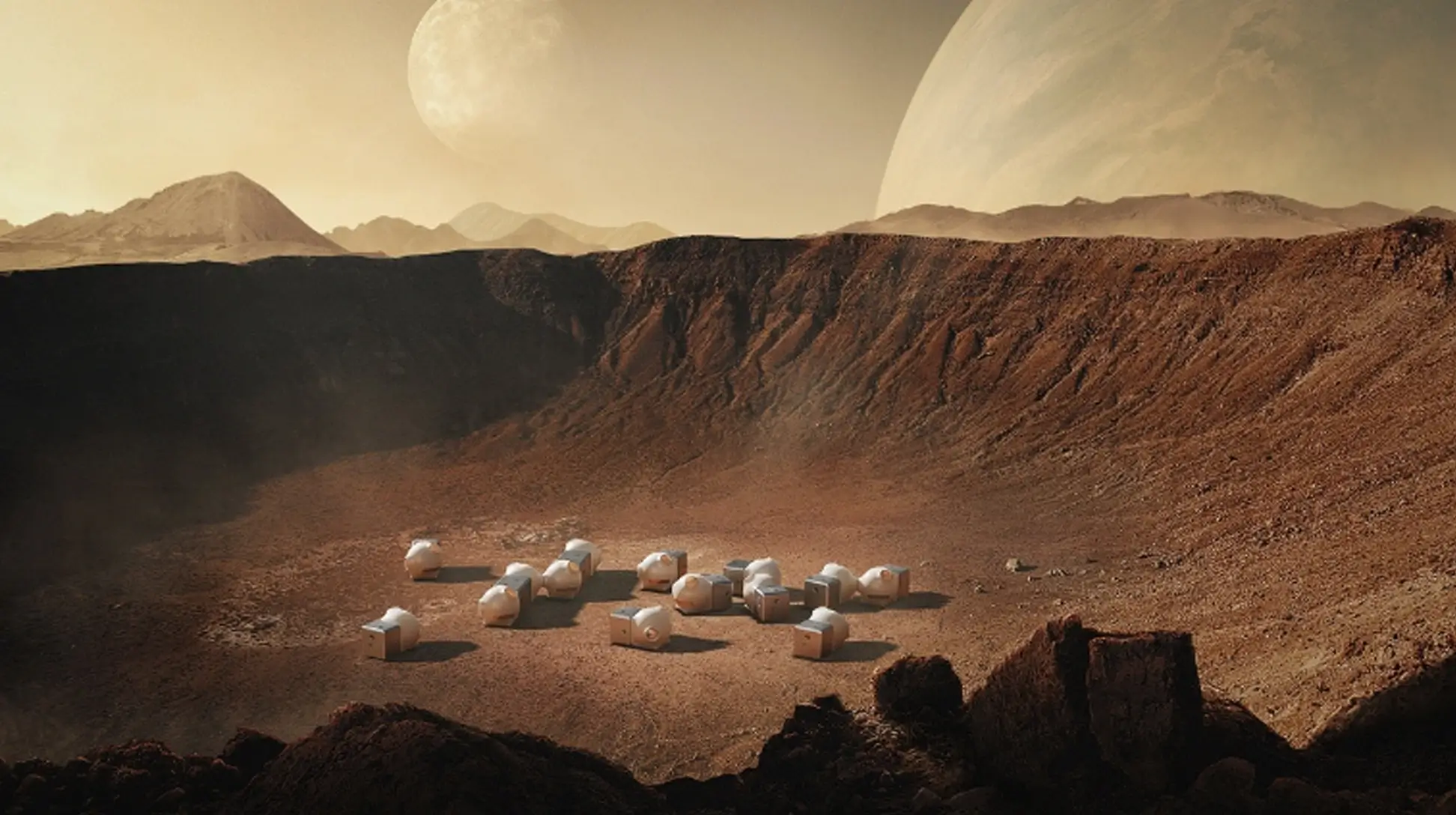
Space exploration, often seen as distant, plays a crucial role in driving innovation, expanding science, and inspiring solutions for global challenges. | MARS Case. Image © Qingshan Wu
Today, the field is advancing rapidly with ambitious goals to establish colonies on the Moon and Mars. This evolution has been driven by decades of experience and technological innovation, enabling architects and engineers to design for the unique challenges of space environments.
Principles of Space Architecture
Space architecture operates within extreme constraints that demand innovative solutions. Designing for microgravity, radiation exposure, and temperature & pressure extremes requires structural and material ingenuity. Structures must withstand the vacuum of space while optimizing limited space for functionality and comfort.
Key principles include:
- Structural Integrity: Materials must endure harsh conditions, including micro-meteoroid impacts and radiation exposure.
- Efficient Use of Space: Compact, modular designs ensure optimal use of limited resources and cater to evolving needs.
- Psychological Well-being: Prolonged isolation necessitates designs that promote mental health, such as incorporating natural light simulation, personal spaces, and community areas.
- Sustainability: Recyclability and self-sufficiency are paramount. Energy optimization through solar panels and closed-loop systems for water and air recycling are essential for long-term missions.
Notable Projects in Space Architecture
Several groundbreaking projects exemplify the progress in space architecture:
-
- International Space Station (ISS): As a collaborative effort of multiple nations, the ISS serves as a research hub and a model for international cooperation in space architecture. Its modular design supports adaptability and long-term habitation.

Astronauts venture on a spacewalk outside the International Space Station, home to rotating crews since November 2000. | Photograph courtesy NASA
-
- Lunar and Martian Habitats: Concepts and prototypes by NASA and SpaceX envision habitats for the Moon and Mars. These designs emphasize sustainability, using in-situ resources like the Martian regolith for construction.
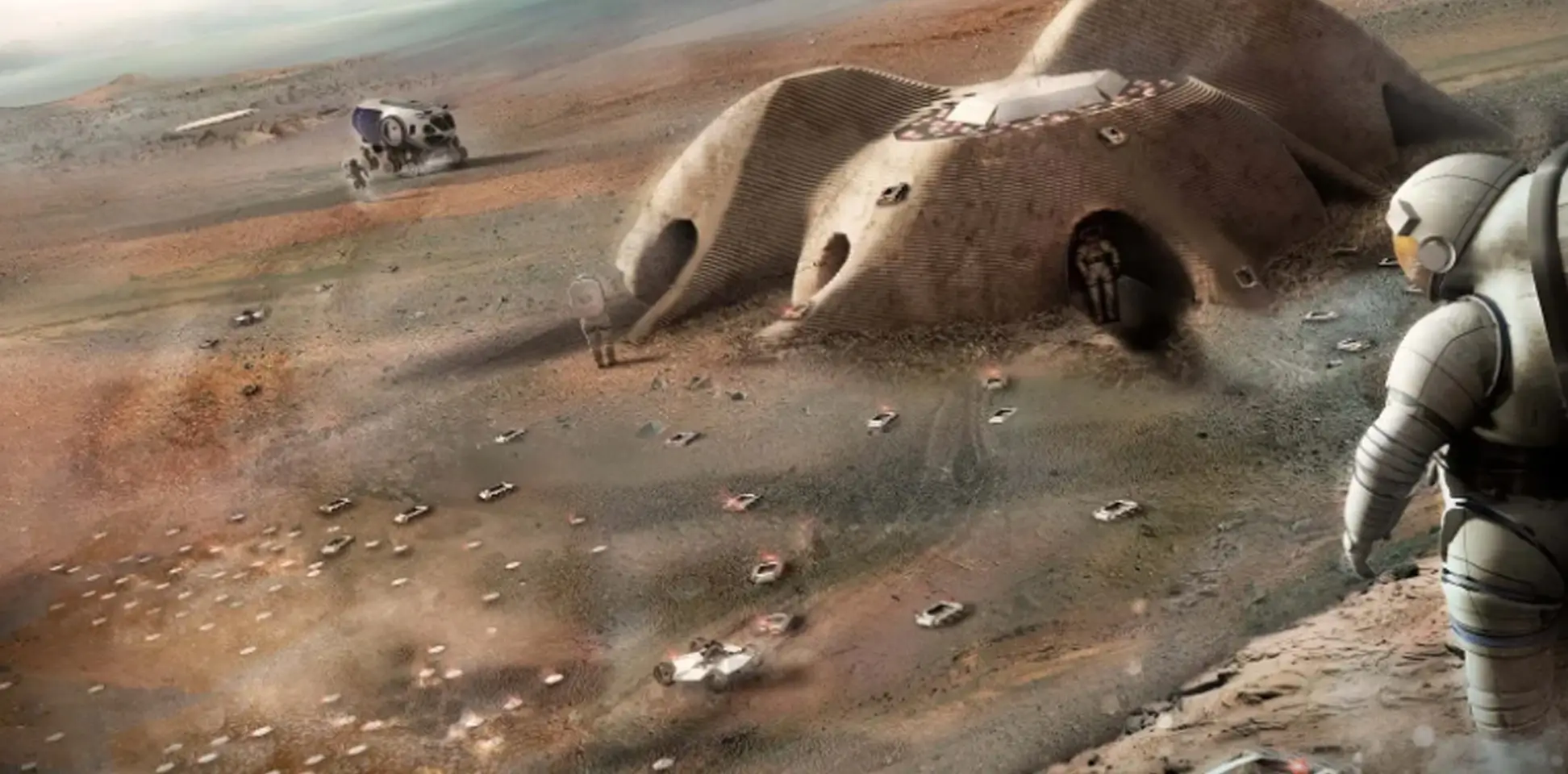
A NASA design competition finalist, this Martian settlement designed for minimal human intervention, features robot-built, 3D-printed habitats from native materials. | Mars Habitat ©Foster and Partner
-
- Mars Ice House: A prototype that utilizes 3D-printed water ice as a protective material against radiation, showcasing the potential for innovative materials in space.
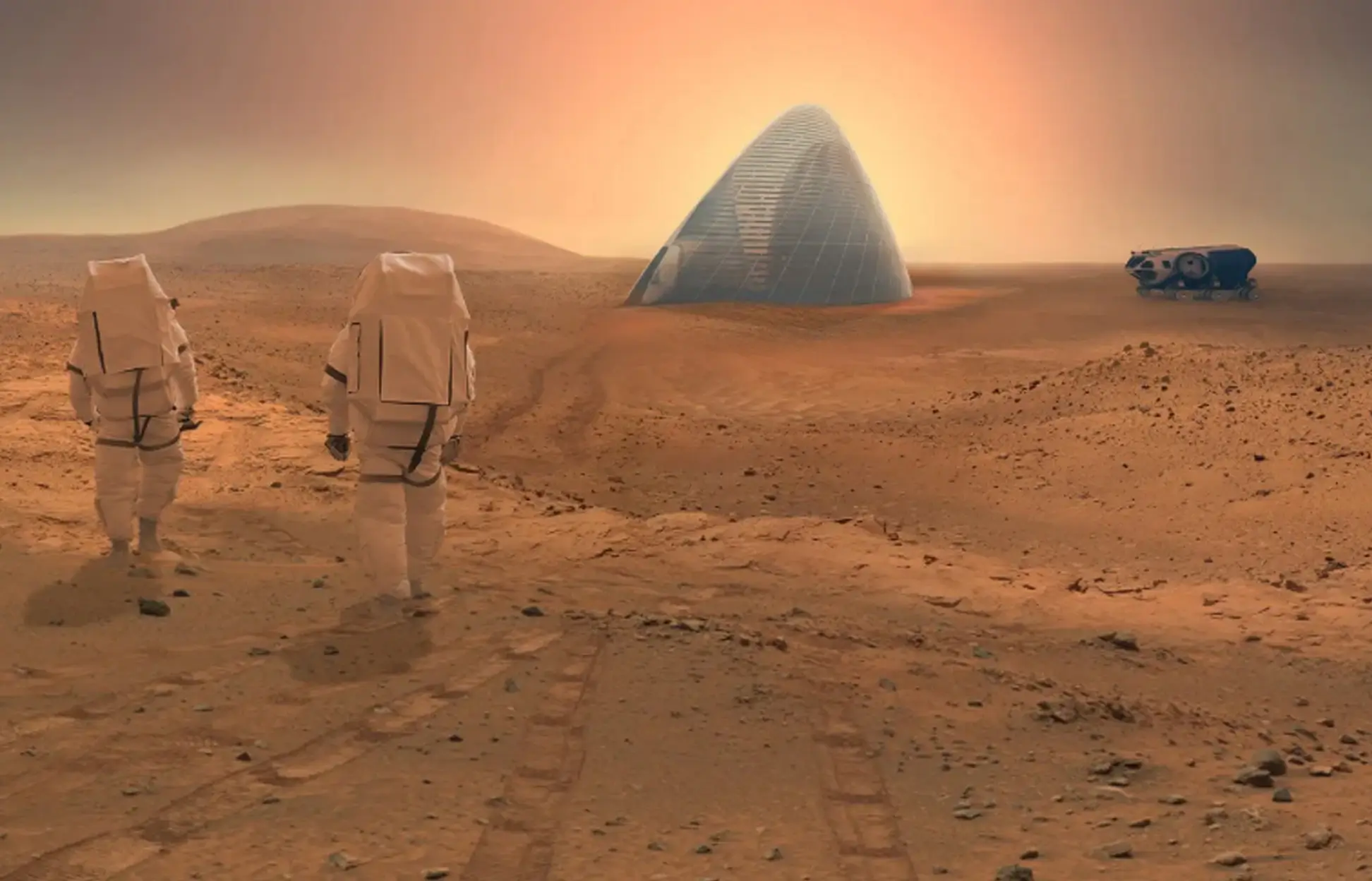
Clouds AO and SEArch+ proposed a 3D-printed ice dwelling on Mars, utilizing its water reservoir to filter and deflect sunlight, supported by native materials. | Mars Ice House_©Clouds AO
-
- Commercial Space Initiatives: Companies like Blue Origin and Virgin Galactic are pioneering space hotels and private missions, heralding the age of space tourism.

The world’s first space hotel, Voyager Station with approaching SpaceX Starship. (Source: Voyager Station)
Innovations in Space Architecture
The field has seen remarkable technological advancements:
-
- Engineering Solutions: Lightweight, radiation-resistant materials and advanced insulation technologies address the challenges of space construction.
- 3D Printing: This technology enables on-site construction using extraterrestrial resources, reducing the need to transport materials from Earth, a concept known as In-situ Resource Utilization (ISRU).
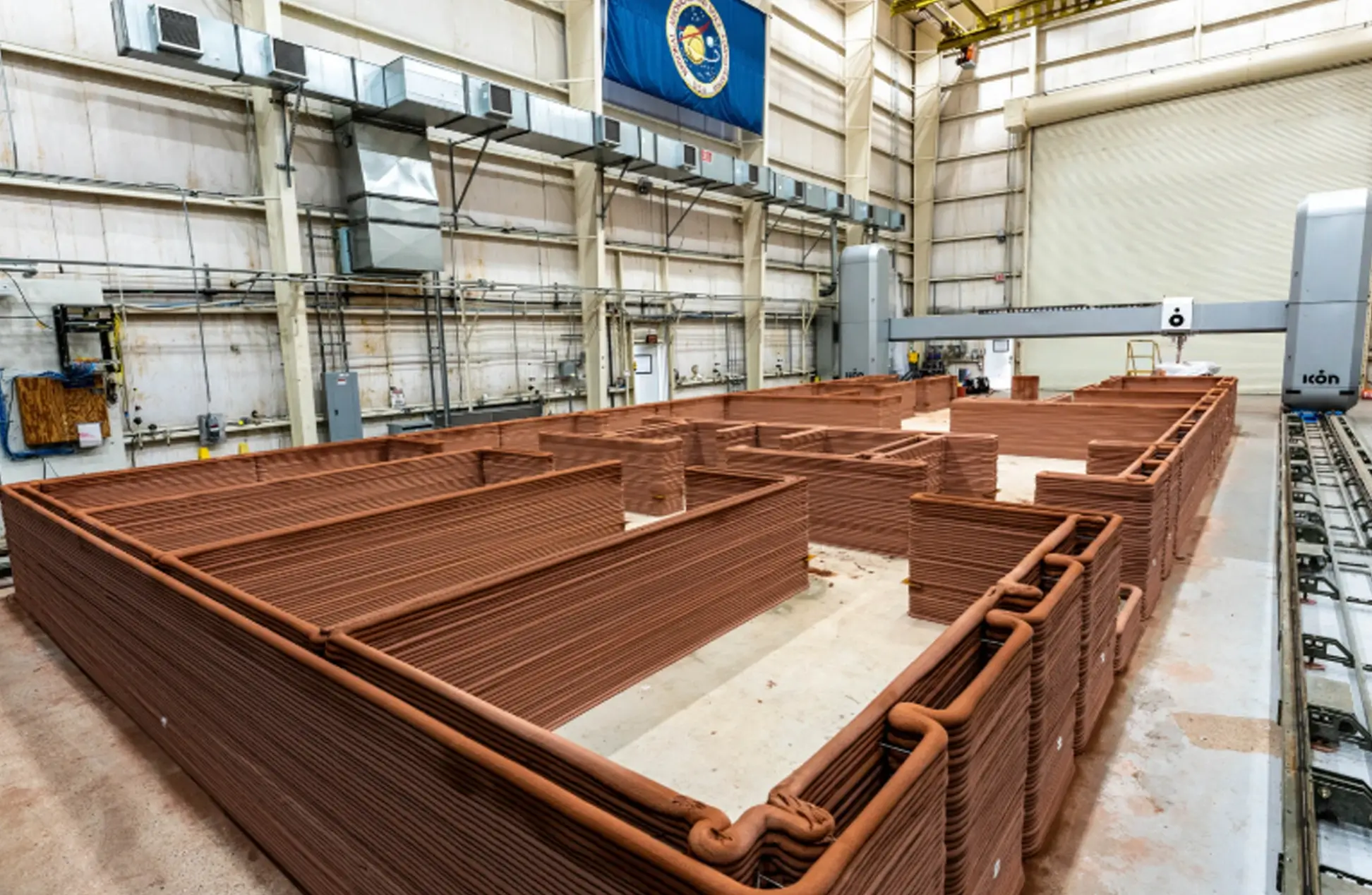
BIG, NASA, and ICON Reveal 3D-Printed Research Habitats for Mars. Closer to home, companies like ICON or HAVELAR are leading the way in 3D-printed construction on Earth. | Image Courtesy of ICON/BIG-Bjarke Ingels Group
-
- Human-Centered Design: Addressing isolation and sensory deprivation is critical. Designs now focus on creating visually stimulating and adaptable environments.
- AI and Robotics: These technologies aid in autonomous construction, maintenance, and resource management, making future missions more feasible and efficient.
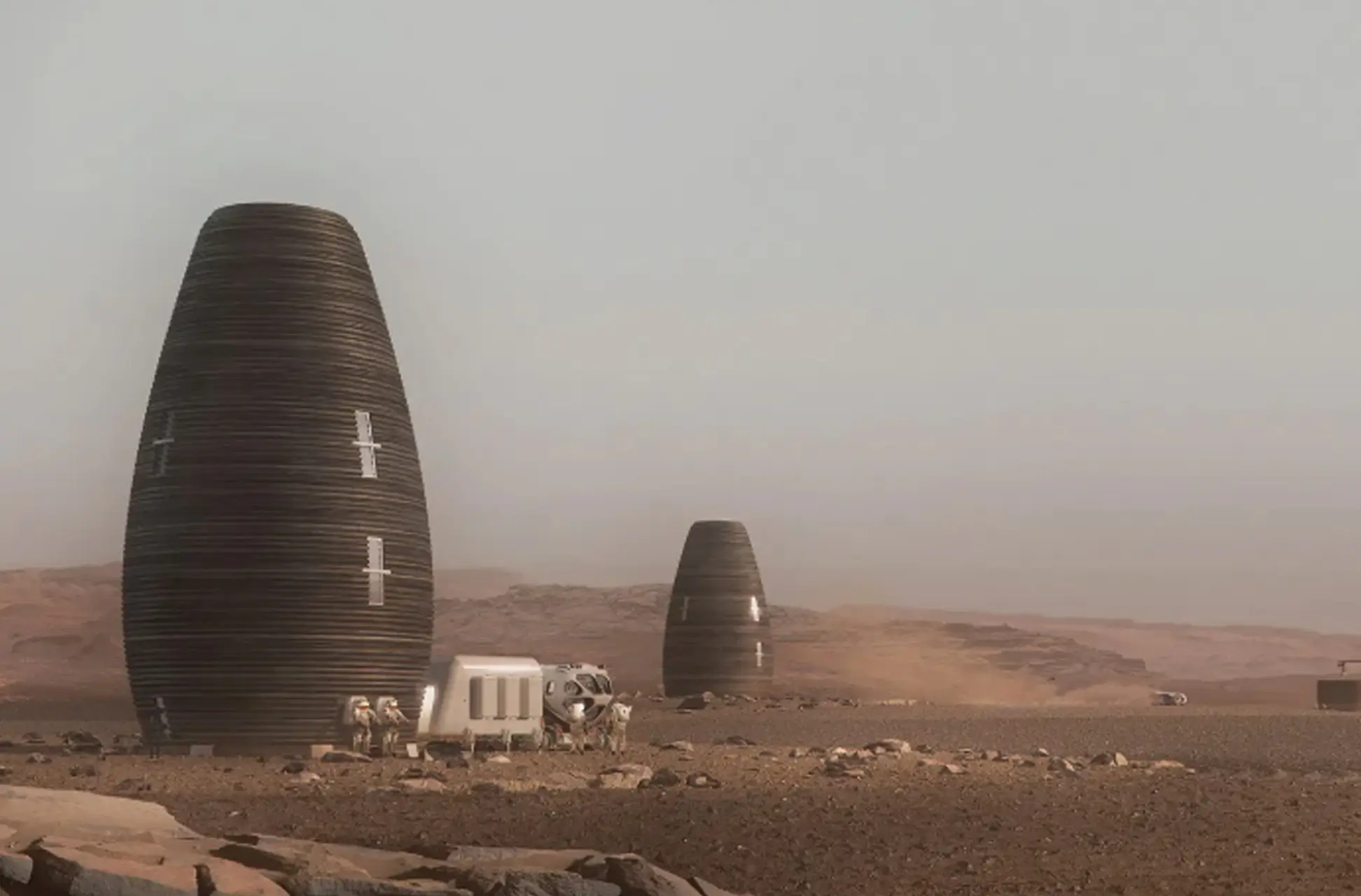
AI Spacefactory proposed a beacon structure 3D-printed using Martian basalt and vegetable-based bioplastic for durable construction. | Marsha_©AI Spacefactory
Future of Space Architecture
Looking ahead, space architecture will play a pivotal role in humanity’s interplanetary ambitions. Plans for colonizing the Moon and Mars are gaining momentum, with timelines suggesting permanent human presence within the next few decades. The rise of commercial space stations and orbital hotels highlights the growing interest in space tourism.

SOM’s Moon Village design envisions self-sustaining, interconnected settlements with modules built to withstand space’s extreme conditions. Each features a rigid frame with an inflatable structural shell. | Moon Village ©SOM
Interstellar exploration further challenges architects to design for journeys lasting decades or even centuries. Ethical considerations, such as sustainability, responsible resource use, and minimizing impact on extraterrestrial environments, will shape the discipline’s trajectory.
Space architecture is at the heart of humanity’s quest to explore and expand beyond Earth. It redefines our understanding of habitation, offering solutions to challenges we’ve never faced before. As we push the boundaries of design and technology, space architecture not only enables survival in hostile environments but also inspires us to envision new possibilities for life. After all “Mankind was born on Earth. It was never meant to stay there.”

SEArch+, BIG, and ICON are collaborating with NASA to create a lunar construction system, with the Lunar Lantern designed to provide optimal habitat for long-term missions on the Moon. | Lunar Lattern ©ICON
References
https://www.archdaily.com/1019663/architecture-beyond-earth-how-space-exploration-is-shaping-the-future-of-architecture
https://www.re-thinkingthefuture.com/designing-for-typologies/a5737-space-architecture-a-life-beyond-planet-earth/
https://www.dezeen.com/2024/10/15/space-architecture/
https://www.archdaily.com/921752/50-years-after-the-moon-landing-15-architecture-projects-for-life-in-space
